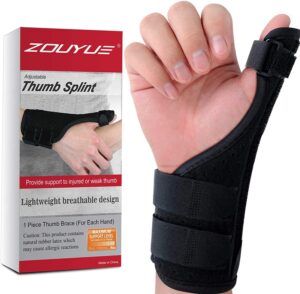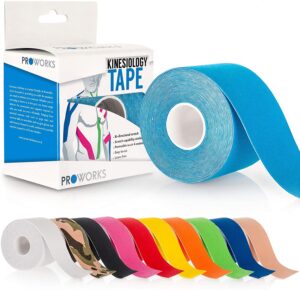Pain in the thumb is common during and after pregnancy. It is usually the base of the thumb that is affected and can affect your every day activities if it is not addressed early on.
Symptoms:
-
Pain at the wrist end of your thumb.
-
Swelling at the wrist end of the thumb (often over the tendons that you can see when you give a thumbs up)
-
Difficulty moving your thumb and wrist when you’re doing something that involves grasping or pinching
-
A ‘sticky’ feeling in the thumb when trying to move / use it.
Causes:
-
Usually experienced shortly after having your baby due to repetitive lifting / holding / gripping (which is a new movement for you).
-
Change in hormones during pregnancy.
-
Changes in the amount of fluid in the body during pregnancy can increase pressure around tendons and nerves.
Here is what the evidence says about the treatment options:
Thumb Splint – evidence suggests that the use of a thumb splint or thumb spica, as they’re also known, can be very beneficial in reducing symptoms of De Quervain’s syndrome or pain at the base of the thumb. We would recommend THIS type of splint if you have any of the symptoms described below.
Hot / cold therapy – there are not a lot of studies investigating the use of hot or cold therapy on thumb pain specifically but we de know that ice / cold reduces pain and inflammation in muscles and tendons. I would use ice for 15 minutes 2-3 times a day if the thumb is aching at rest and you need some instant relief. You can use heat at any other times, just make sure it is warm (not hot) and you are having time with nothing over the painful area as well (to ensure a good circulation is maintained).
Taping – There is good evidence for the use of kinesio-taping when it comes to De Quervain’s syndrome. The tape that we recommend is THIS one (available from Amazon). It is really easy to apply, we have used it a lot (with patients in clinic), and we can confirm that it does stick very well and will last a couple of days without peeling off.
Have a look at this post from our friends at Finola Physio for taping techniques and brilliant exercise ideas.
Medications – evidence suggests that use of medications such as non-steroidal anti-inflammatories can help in the short term (hese are not recommended during pregnancy) but make little difference in the long term.
Exercise – There is evidence in support of the use of strengthening / eccentric exercises for De Quervain’s syndrome. Have a look at THIS really informative post from our friends at Finola Physio. It shows some great exercise ideas and taping techniques.
Activity Modification – This is going to be key if the cause of your pain is due to having a new baby. Have a read through our blog about thumb pain and what you can do to treat / prevent it. A lot of the recovery is down to changes in how you hold your baby and do every day activities.



